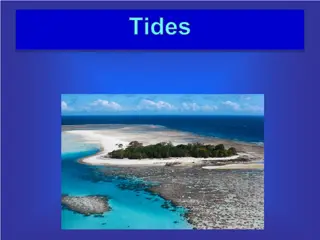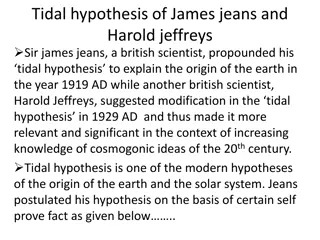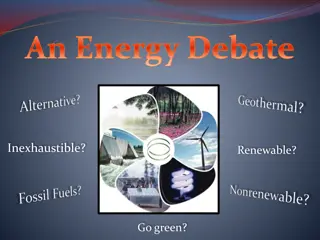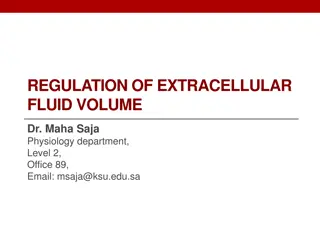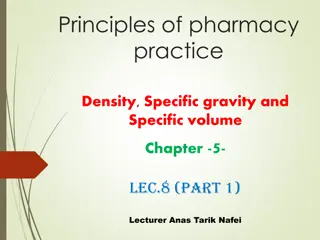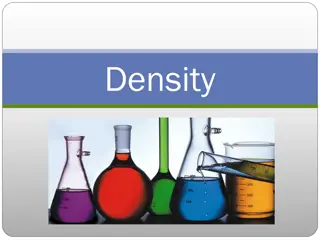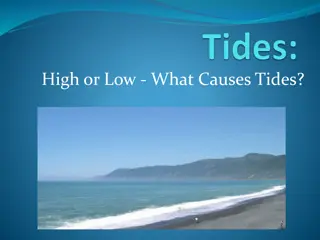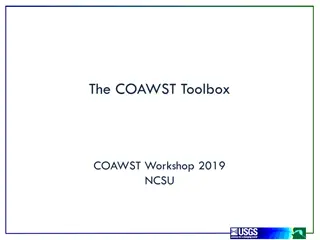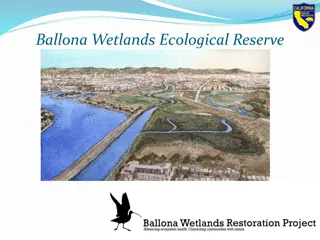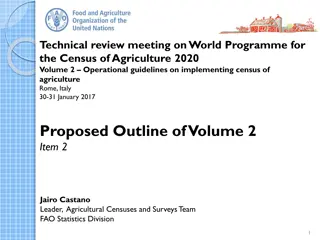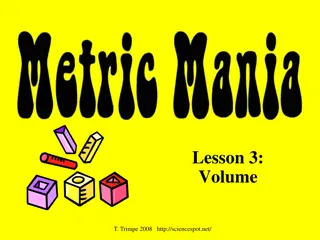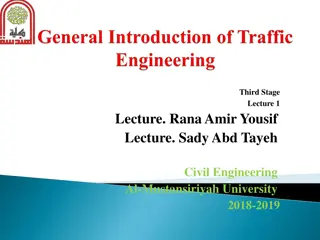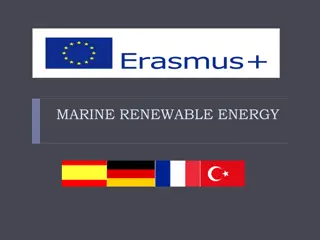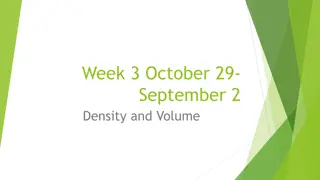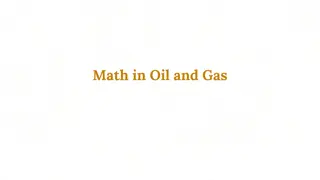Green Energy Market
Green energy also referred to as clean energy, is usually derived from natural sources that are constantly replenished. Solar energy, wind energy, hydroelectric power, biomass energy, geothermal energy, tidal energy, and wave energy are different types of renewable energy. Solar energy is the radian
6 views • 6 slides
Understanding Tides: Causes, Types, and Phenomena
Explore the fascinating world of tides, from what causes them to the daily cycle of high and low tides. Discover why the moon plays a significant role in influencing tides and how tidal currents contribute to the dynamic movement of ocean waters. Learn about the gravitational forces of the Earth, Mo
3 views • 30 slides
Modelling Estuarine Habitats in the Upper Sea Scheldt: Human-Induced Adaptations
Explore a research study on modelling estuarine habitats in the Upper Sea Scheldt under various human-induced channel and floodplain adaptations. The study examines the impact of interventions on habitat size, water quality, ecosystem, and more, providing insights into the future of the estuarine en
3 views • 13 slides
Understanding Tides and Earthquake Triggers
Spring tides occur when the moon is new or full, resulting in higher high tides and lower low tides. Neap tides follow, with moderate tides. Tides can trigger earthquakes due to stress and tidal components like normal and shear stresses. Statistical tests analyze the tidal phase angles at the time o
0 views • 25 slides
Regulation of Extracellular Fluid Volume in Renal Physiology
This lecture focuses on the mechanisms involved in the regulation of extracellular fluid volume, primarily highlighting the role of sensors, effectors, and the kidney in maintaining body fluid balance. It discusses the importance of regulating extracellular fluid volume and osmolarity for controllin
0 views • 25 slides
Pharmacy Practice: Percentage and Ratio Strength Calculations
Understanding percentage and ratio strength calculations is crucial in pharmacy practice. Percentages can be expressed as fractions or decimals, and various concentrations like weight-in-volume and volume-in-volume are used in pharmaceutical preparations. Learn how to calculate the correct strength
0 views • 24 slides
The Tidal Hypothesis of James Jeans and Harold Jeffreys: Origin of the Earth
The Tidal Hypothesis proposed by British scientists James Jeans and Harold Jeffreys in the early 20th century suggested that the Earth and solar system were formed from the interaction of the Sun and an intruding star. Jeans postulated that massive gravitational forces from the intruding star caused
2 views • 5 slides
Understanding the Debate on Inexhaustible vs. Nonrenewable Energy Sources
The energy debate revolves around the classification of energy sources into nonrenewable, renewable, and inexhaustible categories. Fossil fuels, such as coal, petroleum, and natural gas, fall under nonrenewable sources due to their finite nature, while wind and tidal energy are examples of inexhaust
0 views • 18 slides
Understanding Ventilation and Oxygenation in Respiratory Care
Review covers key concepts of ventilation and oxygenation, including the control of breathing, assessment of tidal volume, and the roles of different respiratory centers. Learn about the importance of observing chest rise to assess tidal volume accurately. Gain insights into the brain stem's pivotal
6 views • 41 slides
Regulation of Extracellular Fluid Volume: A Comprehensive Overview
Understanding the intricate mechanisms involved in the regulation of extracellular fluid volume is essential for maintaining normal body function. This includes sensor and effector roles in renal regulation, the influence of aldosterone on Na+ reabsorption, the significance of Na+ balance, and the i
1 views • 22 slides
Understanding Density and Specific Gravity in Pharmacy Practice
Density and specific gravity are important concepts in pharmacy practice for measuring mass and volume relationships of substances. Density is the mass per unit volume of a substance, usually expressed in grams per cubic centimeter, while specific gravity is the ratio of the weight of a substance to
0 views • 21 slides
Understanding Gas Laws: Boyle's, Charles', Gay-Lussac's, and Avogadro's Laws
Gas laws such as Boyle's Law, Charles' Law, Gay-Lussac's Law, and Avogadro's Law govern the behavior of gases under different conditions. Boyle's Law relates pressure and volume at constant temperature, Charles' Law relates volume and temperature at constant pressure, Gay-Lussac's Law relates pressu
1 views • 19 slides
Understanding Packed Cell Volume (PCV) and Haematocrit (HCT) Testing
Packed Cell Volume (PCV) or Haematocrit (HCT) is a blood test that measures the volume of red blood cells as a percentage of total blood volume. High or low values can indicate specific health conditions like dehydration or anemia. The test is important in diagnosing conditions like polycythemia. Me
0 views • 14 slides
Understanding Mass, Volume, and Density in Science
Discover the essential concepts of mass, volume, and density in science. Learn how to differentiate between these terms, their units of measurement, and their significance in understanding the physical properties of objects. Explore the importance of mass in determining the amount of matter, the con
0 views • 16 slides
Understanding Tides: Causes, Forces, and Patterns Explained
Explore the fascinating world of tides, from their causes - the gravitational forces of the sun and moon, to the concepts of tidal range, spring tides, and neap tides. Discover how these natural phenomena impact our oceans and environment in a rhythmic cycle of ebb and flow.
0 views • 11 slides
Understanding Density and Physical Properties of Matter
Matter possesses physical properties that can be observed without changing its identity, including color, shape, length, mass, volume, and density. Density is the amount of mass per unit volume, where D = m/V. Objects with the same volume but different masses can have varying densities. Density can
1 views • 7 slides
Impacts of Climate Change on Shoreline Dynamics in Southeast Queensland, Australia
The study focuses on understanding the influence of climate phenomena like ENSO, SAM, and STR on shoreline change along the wave-dominated coast of Southeast Queensland. Utilizing a shoreline dataset mapped over two decades, the research explores the variability in wave climate and its correlation w
3 views • 13 slides
Understanding the Causes of Tides and Their Effects on Earth
Tides are a result of the gravitational interactions between Earth, the Moon, and the Sun. The Moon's gravity creates tidal bulges on Earth's surface, leading to the daily rise and fall of water levels known as tides. These phenomena have a significant impact on ocean coastlines and the overall wate
0 views • 16 slides
Overview of the COAWST Toolbox and its Components
The COAWST Toolbox is a suite of MATLAB tools, scripts, and functions that offers standard functionalities for creating grids, initial conditions, atmospheric forcing, boundary conditions, and climatology files for COAWST. It includes tools for creating tidal forcing files, and ROMS expects specific
0 views • 51 slides
Surface Water-Groundwater Interactions and Nitrogen Cycling in a Tidally Influenced River Study
Study on the dynamic interactions between surface water and groundwater in a tidal river, focusing on nitrogen cycling. The research highlights the impact of tidal fluctuations on bank storage, nitrogen transformation, and nutrient cycling. Findings suggest that river discharge affects the exchange
1 views • 16 slides
Insights into Neutron Stars: Observations and Implications
Exploring the fascinating realm of neutron stars through astronomical observations and the implications for equations of state (EOS). Delve into the mysteries of neutron star properties, measurement results from projects like PREX/CREX, and the significance of NS masses, tidal deformabilities, and r
0 views • 24 slides
Tidal Wetlands and Shorelines in the Chesapeake Bay: Environmental Impact and Conservation Efforts
Tidal wetlands and shorelines in the Chesapeake Bay face pressures from water, land, storms, upland development, shoreline modification, and sea-level rise. Collaborative efforts like the Fish Habitat Action Team aim to highlight the importance of these ecosystems for fisheries. Projects focus on sy
0 views • 9 slides
Conservation Efforts and Restoration Plans for Ballona Wetlands
The Ballona Wetlands Ecological Reserve is undergoing long-term restoration planning to restore tidal circulation, provide diverse wetland habitats, and create new habitat areas for native species. Various initiatives and projects, such as the Dutch Slough Carbon Sequestration and the EIR Project Go
1 views • 15 slides
Coastal Ecosystems: Salt Marshes and Mangroves Overview
Explore the factors influencing coastal ecosystems like latitude, tidal cycles, wave energy, and geological characteristics. Dive into examples from the Pacific Northwest and southeastern U.S., focusing on salt marsh ecosystems. Learn about plant communities and zonation in salt marsh environments.
0 views • 22 slides
OpenStack Cinder Storage Capabilities Overview
OpenStack Cinder provides persistent block storage resources for cloud environments with support for multiple back-ends and over 100 volume drivers. This overview covers key features like volume migration, volume retype, generic volume cache, replication, volume groups, backup, and restore. Addition
1 views • 29 slides
Understanding Mass, Volume, and Density in Physics
Matter, which makes up the universe, has mass and volume. Learn the differences between mass and volume, and weight, as well as how to measure them accurately. Discover why a ton of bricks and a ton of feathers have the same mass but different volume. Understanding the concepts of mass, volume, and
3 views • 12 slides
Tidal Waters Fish Habitat Assessment Choptank Framework Pilot Fish GIT Meeting January 2021
The Tidal Waters Fish Habitat Assessment Choptank Framework Pilot Fish GIT Meeting held in January 2021 discussed background, drivers, and the selection of the Choptank River as a candidate tributary. The project team, responsible parties, actions, and timeline for developing an analytical framework
0 views • 17 slides
Operational Guidelines for Implementing World Programme for the Census of Agriculture 2020 Volume 2
Proposed outline of Volume 2 presented at a technical review meeting in Rome, Italy. The purpose of Volume 2 is to provide comprehensive guidance on preparing and conducting agricultural censuses, with detailed steps on developing the census chapter, planning, methodology, and implementation. The st
5 views • 12 slides
Understanding Jeans-Jeffreys Tidal Theory of Planet Formation
Tidal Theory posits that planets form from condensed materials close to the sun, a concept pioneered by Sir James H. Jeans and Sir Harold Jeffreys. Jeans proposed continuous matter creation in the universe, while Jeffreys explored the solar system's origin and latitude variation through astronomical
0 views • 5 slides
Tidal Deformability of Compact Stars Admixed with Scalar Fields Research Summary
Researchers like C. J. Horowitz and Kwing-Lam Leung are exploring the effects of dark matter, scalar fields, and ultra-light dark matter on compact stars like neutron stars. Methods involve calculating tidal love numbers, using energy-momentum tensors, and studying equilibrium solutions. The study a
0 views • 20 slides
Understanding Volume in Mathematics: A Comprehensive Guide for Students
This comprehensive guide delves into the topic of volume in mathematics for students. It covers the importance of volume in daily life, how to find the volume of various solid objects using formulas, solving volume-related problems, and applying volume concepts in real-life scenarios. The guide also
0 views • 35 slides
Understanding Mechanical Ventilation in Anesthesia Practice
Anesthesia technologists play a crucial role in managing artificial ventilation, including concepts like Invasive Positive Mechanical Ventilation (IPMV), Fraction of Inspired Oxygen (FIO2), Tidal Volume (VT), Peak Flow Rate, Respiratory Rate, Minute Volume (VE), I:E Ratio, and more. They monitor and
0 views • 27 slides
Understanding Volume Measurement in Metric Units
Explore the concept of volume measurement in metric units through lessons on English vs. metric units, measuring liquid volume with graduated cylinders, and calculating solid volume using formulas. Understand the relationship between liters, milliliters, and other units, and learn practical techniqu
0 views • 6 slides
Understanding Traffic Engineering Studies in Civil Engineering
Traffic engineering is a crucial aspect of transportation engineering that encompasses planning, design, and operation of roads, streets, and highways. It involves analyzing traffic volume, speed studies, parking patterns, traffic flow characteristics, accident studies, and more. Traffic volume stud
0 views • 37 slides
Understanding Marine Renewable Energy and Tidal Power
Renewable energy is derived from natural resources that won't run out. Tidal energy harnesses the rise and fall of water levels due to tidal waves, occurring typically twice a day with a 12-hour cycle.
0 views • 9 slides
Advancements in Marine Renewable Energy Technology: A Comprehensive Overview
Cutting-edge developments in marine renewables, particularly tidal energy, are showcased in this event report. The profile highlights the extensive experience of key figures in the field, detailing projects like Tandem Tidal Turbine and ADCP applications. The research dissemination on tidal turbine
0 views • 12 slides
Unit Conversion and Calculation Practice with Length, Mass, Volume, and Density
Practice various unit conversions and calculations involving length, mass, volume, and density using conversion factors such as inches to centimeters, pounds to kilograms, and quarts to liters. Solve problems like converting marathon distance from miles to kilometers, determining mass in kilograms f
0 views • 7 slides
Understanding Density and Volume in Science Class
Explore the concept of density and volume in science class through hands-on activities and tests. Learn how to calculate density, mass, and volume, and understand the relationship between volume and mass in solving for density. Practice measuring volume and mass with diverse problems to enhance your
0 views • 35 slides
Understanding Key Factors in Oil and Gas Industry
Explore essential concepts in the oil and gas sector such as oil volume at surface conditions, gas volume at standard conditions, porosity measurement, water saturation, and formation volume factor. Learn how to calculate stock tank oil volume, gas in place, and interpret crucial parameters for rese
0 views • 12 slides
Understanding Volume Measurements in Lab Experiments
Explore the world of volume measurements in laboratory settings, delving into the concepts of volume in both metric and imperial systems. Learn about factors to consider in liquid measurements, techniques for measuring liquids accurately, and the use of domestic measures in drug administration. Disc
0 views • 11 slides

